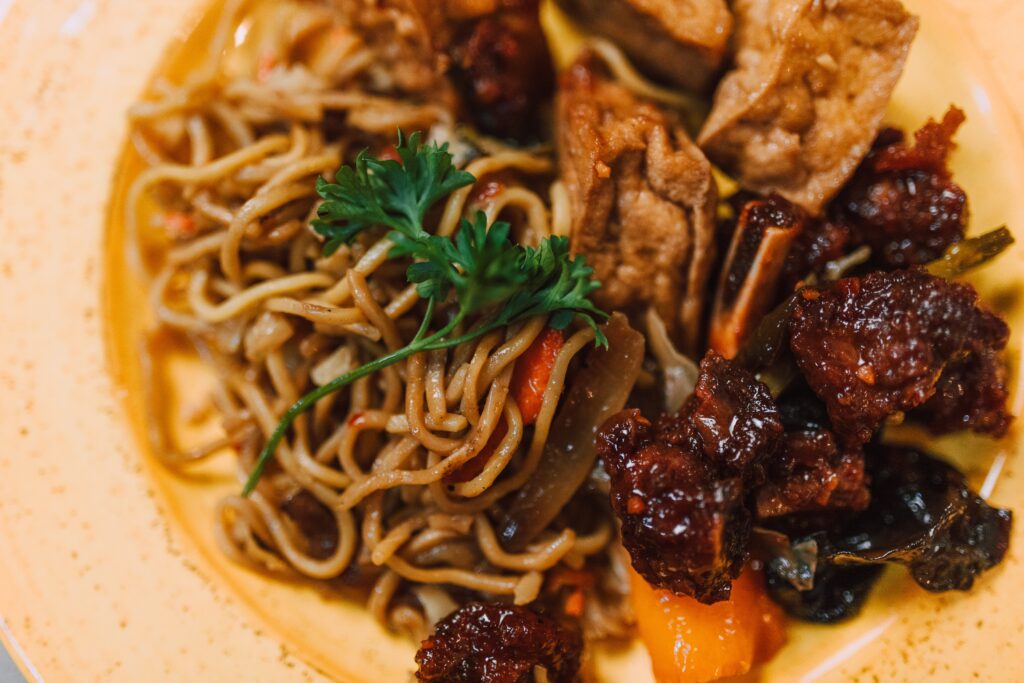How To Freeze Zucchini Noodles?
If you’re looking for a healthier alternative to wheat-based pasta, check out zucchini noodles. It’s low on calories and high in vitamins and minerals, and it’s made out of fresh vegetables.
It would be better to stock up on zoodles instead of going for the regular pasta. The only way to keep it from going bad is to freeze it.
We reached out to health enthusiasts to find out how to freeze their noodles.
It turns out that the freezing methods for zucchini noodles are different for different reasons. Two methods we recommend for you to follow are listed.
- Dry out the zucchini noodles with salt and freeze.
- Dip the zoodles in boiling water and then freeze.
The methods are as straightforward as they are broad. We detailed all the steps you need to take for each method in this post, so you don’t have to worry.
You can scroll down to find the most suitable freezing method for your tastes.
Table of Contents
How Can I Freeze Zoodles?
Before anything else, make sure that your zoodles came from fresh and clean zucchini.
You should always wash your zoodle strips to remove dirt and debris if they are homemade or bought from the market.
After your preparation, take the following steps to freeze.
You Need to Dry out the Zucchini Noodles with Salt and Freeze
- A towel or water-absorbent cloth is needed to cover the bowl.
- Put the noodle strips in the bowl and sprinkle some salt on them.
- Make sure that the strips are well coated by mixing the salt with the zoodles.
- Allow it to sit for at least one hour.
- To prevent the fruit from getting soggy in the freezer over time, this process will help drain out the water in the zucchini.
- There is a chance that the towel or cloth may be soaked after the waiting time.
- Transfer the zoodles to a new bowl and squeeze the remaining liquid from them.
- If you feel that the strips have become a bit firm, place them on a colander and cover them with a cloth.
- The strips should be wrapped for a few minutes and wrung to get rid of the Moisture.
- For quick air drying, transfer the noodles to another piece of fabric and leave it there for one hour.
- Most of the flavor and texture of the zoodles can be retained if you portion them into small amounts.
- It may be useful when you want to use some for your recipes later on, without having to thaw all of them.
- If you want to press as much air out of the bag, pack the portion into a freezer bag.
- The water seal technique is detailed in this section.
- The zoodle packs should be labeled with the date you are freezing them on and the expected expiration date.
- It’s possible to store your noodles in the freezer for a year.

Dip the zoodles in boiling water and then freeze
- Bring the deep pan or casserole to a boil with half the pan filled with water.
- A bowl of cold water with ice cubes should be prepared while waiting for the water to boil.
- You will use this to cool down the blanched zoodles.
- Prepare a baking tray and then cover it with a kitchen napkin.
- You can dip the noodles in the boiling water by placing them in a colander.
- It should be immersed for at least 2 minutes if the strands are thin and 4 minutes if they are a bit thick.
- Immediately after the time, take the zoodles out of the strainer and put them in a bowl of iced water.
- It will help to stop the cooking process and retain its crunchiness.
- You prepared the tray before laying the zoodles on it.
- Make sure the space between the zoodle strips is large enough for the air to dry quickly.
- If you want to speed up the drying process, you can pat them with a clean towel.
- For a flash freeze, place the noodles in the freezer for at least 30 minutes to 1 hour, while still on the tray.
- When stored in the freezer for a long period, flash freezing will help prevent zoodles from sticking to each other.
- Pack the noodles in portions with a freezer-ready bag, label them, and then freeze them.
Is It Possible to Freeze Raw Zucchini Noodles?
We recommend blanching the fruit before freezing if you want to extract the water content of the vegetable.
It is possible to freeze raw zucchini noodles. It’s important to remember that 95 percent of the zucchini’s overall composition is high humidity.
The soggy, flavorless noodles are a result of the freezing of raw zucchini noodles without proper treatment.
Is It Needed to Blanch Shredded Zucchini Before Freezing?
Most fruits and vegetables can be blanched before freezing. Zucchini can stay longer in the freezer if it is blanched. It preserves the flavor and nutrition of the vegetable.
It makes it harder to develop the aging enzymes in fruits and vegetables. When you freeze a zucchini, the amylases remain active and gnaw away at the freshness of the zucchini.
Even when frozen, the zucchini can still grow. You are left with a soggy texture after a thaw.
If you want to keep the flavor and texture, you should always dip your zucchini in boiling water for a few minutes.
You can freeze the zucchini if you don’t plan on keeping it in the freezer for more than 5 days.
How Can I Freeze Freshly Shredded Zucchini?
If you prefer shredded zucchini, all you need to do is stack it in the freezer bag, squeeze the air out, label and freeze. It’s as easy as that.
FoodSaver bags, containers, and vacuum sealers can be used for extra vacuum sealing capability. If you want to keep your food fresh, it guarantees that it will stay fresh longer.
It’s also very simple to defrost. Take the zoodles out of the freezer and place them in the fridge for 8 hours or overnight to thaw naturally.
A quick thaw can be achieved by using the microwave. It is only possible to freeze shredded zucchini for about 8 to 10 months because of the presence of hydration and aging enzymes.

Is It Possible That Spiralized Zucchini Freeze Well?
Most of you agree that your zucchini noodles should look like regular pasta, so you choose to use a spiralizer to make your zoodles.
You have to freeze it until it’s all good. The spiralized zucchini doesn’t freeze very well. The reason still comes down to the water content.
Unlike sliced zoodles where you can squeeze the water out of them, spiralized zucchinis are unstable and crumble fast when pressure is applied to them, so the excess water stays in them.
Ali Maffucci, the author of Inspiralized, said that spiralized zucchini noodles aren’t good for freezing because they lose their elasticity after being frozen.
Conclusion
You don’t have to prepare your zucchini noodles for freezing by kneading them with salt or blanching them for a few minutes.
It’s not a good idea to freeze raw zucchini noodles because they could lose their texture and flavor.
Zoodles can be kept fresh and avoided waste if they are put in FoodSaver bags. You don’t have to worry about making more zoodles for your future recipes.

Foodie and a passionate cook, I am here to share all of what I know about cooking, kitchen, and food prepping.
Follow me for delicious and healthy recipes.







